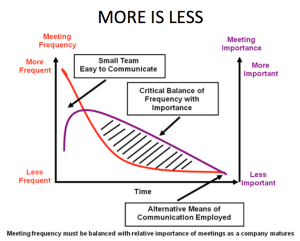4 ESSENTIAL ELEMENTS FOR EFFECTIVE TEAM MEETINGS
By SHWETA JHAJHARIA, THE LONDON COACHING GROUP
One of my clients said to me, “I wish I could grow my business without ever hiring anyone.”
Does that sound familiar?
If you don’t want to be firefighting anymore, want to improve the communication in your company, or if you need your team members just to do what you ask them to do, then it’s time to consider improving how you’re conducting your team meetings.
Before I launch into what actually makes a good team meeting, let me first address the inevitable cringe that I face whenever I mention a “team meeting”. I come from a corporate background and I get it – team meetings often sound like a waste of time. Less is more totally makes sense in that environment.
But in an SME, you’re not a matured business yet; you are still growing and you have a lot more potential to attain.
To access that potential, you need to leverage the collective intelligence that you have in your business, and move the whole team forward in a cohesive manner.

It depends on what stage your business is at, but mark my words, for an SME, when it comes to team meetings, more is less. That is, the more team meetings you conduct well, the less time wastage and stress you will experience.
This is because effective meetings mean:
- Broader buy in and consensus
- Better understanding of complex problems and issues
- Better understanding of individual contributions
- Greater positive social obligation
So what makes a good team meeting? Well a team meeting needs to be a meeting and not just a “catch up” – a quick chat while you’re having a smoke or making a coffee just isn’t going to cut it if you want to get the leverage you need.
There are two main reasons for a meeting being ineffective:
1) Lack of drama (conflict). Heated arguments and demonstrations of passion, as long as they remain constructive, can generate a deeper and broader understanding of the topic.
2) Lack of context. The type of meeting and the organisation of the meeting needs to be tailored to the issues being addressed.
So to ensure your meetings are effective there are four important elements to implement:
1. Define the purpose.
As the business owner, you need to have it really clear in your head what the purpose of that meeting is. Are you strategizing or discussing operations?
What do you want to get out of this meeting? Do you need to have a campaign structure planned, or are you trying to clarify everyone’s priorities this week/month/quarter? Are you coming up with a broad strategy or trying to introduce systems?
Everything stems from the purpose. If you don’t know what the end goal is, then your meeting will inevitably lose its shape and clarity.

2. Create an agenda.
Once you know the purpose of your meeting, you can shape your agenda. As the leader of the meeting, you should make your agenda sharp – and make sure you stick to it.
If possible, and if the meeting is significant enough, it can be useful to create the agenda well beforehand and circulate it to the team members attending the meeting. That way everyone is prepared, and someone can bring up issues they wish to raise before the meeting, so as not to disrupt your agenda during the meeting itself.
3. Set a time limit.
Team meetings shouldn’t be a long sit down where you’re sharing gossip and relaxing. Sure, it helps to add that personal atmosphere, but make sure that your meeting doesn’t digress too far from the intended purpose and agenda. Otherwise you could spend half your day in team meetings without actually getting anything productive done.

4. Limit the number of attendees.
It’s tempting to have a meeting with the whole company to get that sense of ‘togetherness’. Unfortunately, that’s not the best thing for your company. If you want meetings that are going to move your company forward then the right people need to be sitting in that room.
This will come naturally if you move through the previous steps. Once you know the purpose and agenda for your meeting, it becomes pretty clear who needs to be there – and who is only going to be wasting time if they’re there.
If you’re having a sales meeting, then your sales and marketing people are probably the only ones that need to be there. If you’re doing a high-level strategy meeting, then it’s only the top managers that need to attend.
Every meeting is different and will have unique requirements, so you do need to be flexible with your structure. However, if you follow through these elements, you will quickly come to very specific needs for your specific meeting, and I have no doubt that it will make it a much more productive use of your time.
And even if you don’t have time to do everything on this list, at least ask yourself one simple question before you hold a meeting: “What do I want my team members to achieve after this meeting?”
You will be amazed at the clarity that answering that one question will bring – and what a difference that will make to the meeting and its effectiveness.

About the Author
Shweta Jhajharia, Principal Coach and founder of The London Coaching Group, is a multi- award-winning business coach, recognised both by external bodies and the industry awards panels as the top coach in the UK. Despite competitive economy, her clients across sectors consistently achieve measurable double digit growth (over 41%) and are the most awarded client base in UK.
See:
http://www.londoncoachinggroup.com
Twitter: https://twitter.com/Londoncoachingg
Facebook: https://www.facebook.com/BusinessCoachingLondon
Google+: https://plus.google.com/+Londoncoachinggroup
LinkedIn: uk.linkedin.com/in/shwetajhajharia/
